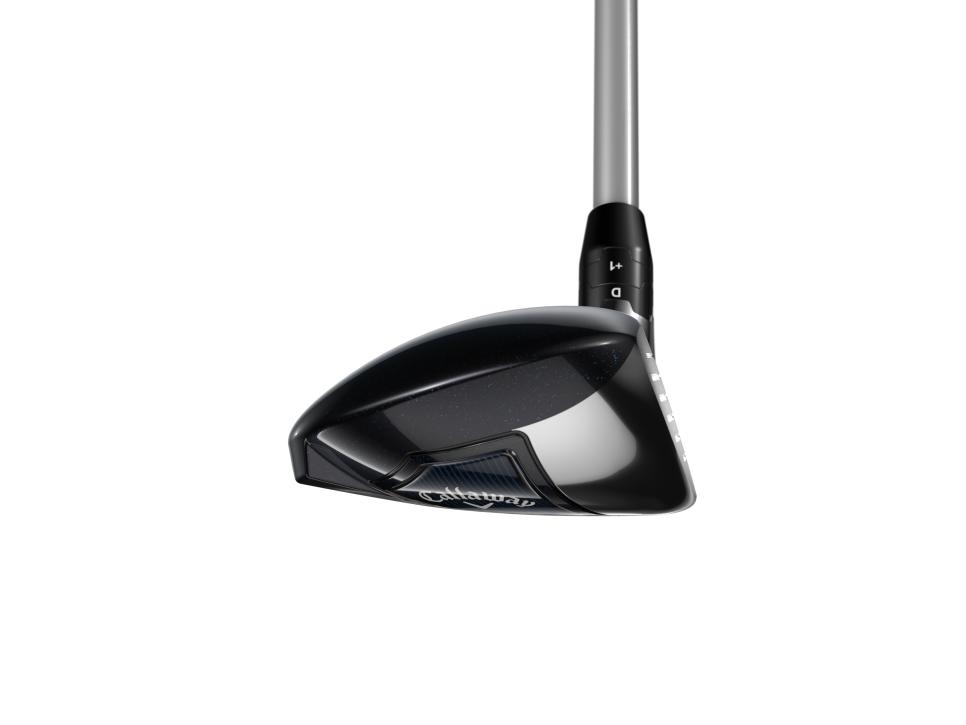WHAT YOU NEED TO KNOW: Callaway’s new collection of Paradym fairway woods and hybrids makes use of an internal structure that joins the crown and sole at the heel and toe areas. It supports the face for better flex and consistent distance and dispersion. The range, all of which include heavy doses of carbon-composite bodies and sole weights that control spin, comprises 14 fairway wood lofts across three different head choices and nine hybrid lofts among two different head options.

PRICE: Fairway woods ($629.99 each): Paradym (15*, 16.5*, 18, 21, 24, 27 degrees, and 20-degree Heavenwood); Paradym X (15*, 16.5, 18, 21 degrees); Paradym⬥⬥⬥ (13.5*, 15*, 18* degrees). *Adjustable hosel. Hybrids ($529.99 each): Paradym (18, 21, 24, 27 degrees); Paradym X (18, 21, 24, 27, 30 degrees). All lofts adjustable. Available at retailers across Australia from February 24.



RELATED: What you need to know about the new Callaway Paradym drivers
3 COOL THINGS
1. How the face gets faster when the body gets stiffer. Both models benefit from a high-strength steel cupface that slightly wraps around the crown and sole. It extends the area of faster and more consistent ball speeds across the face, and in addition, the variable-thickness patterns are unique for each loft and each model head. These patterns were developed by artificial intelligence to find ideal ways to get the most distance and consistency for the typical player a head is designed for.
In addition, both fairway woods and hybrids incorporate a new version of Callaway’s body-strengthening technology known as Jailbreak. Like the face designs, the structure was developed through artificial intelligence, but unlike past models it doesn’t involve bars connecting crown and sole or the frame-like structures stretching behind the face. Instead, it reinforces the stiffness of the crown and sole with a wing-like feature inside the head just behind the toe side of the face.

Said Evan Gibbs, director of research and development for woods, “The adjustable hosel on the heel side creates a lot of stiffness on that end of the club. And the ‘Bat Wing’ creates a lot of stiffness on the toe side, so again we’re trying to stabilise the body at impact, minimise the amount of deflection in the body and in the sides on impact, and really focus that energy into the face and into the ball. It’s allowed us to develop a much hotter club and a much faster club.”

2. It’s not just the face. The bottom of the club holds multiple keys to distance, too. Callaway mixes heavy and lighter materials in the soles on both the fairway woods and hybrids. At first glance, making the sole lighter doesn’t seem to be the best way to keep the centre of gravity low. But in this case it’s about how the light areas allow for an external tungsten sole weight (much heavier than the materials surrounding it) to be positioned closer to the front of the club.

Combined with the composite crown, the amount of weight saving equates to an average of 22 grams per head on the fairway woods. With lots of weight concentrated low and forward, the centre of gravity is better in line with the centre of the face. That means more direct energy transfer with less spin and more distance, particularly for shots hit lower on the face. That’s especially helpful on these longer clubs where Callaway estimates 75-80 percent of the hits occur below the centre of the face. In the end, the weighting means more consistent ball speed, more consistent spin and more consistent distance.

Another key element on the bottom is the contoured region in the rear of the sole on the hybrids. It aims to help the club move more easily through the turf, particularly when the ball is sitting down. The additional area provided by this region also builds in more stability on off-centre shots. Said Scott Manwaring, direct of research and development for irons and hybrids, “This shaping allows us to pull mass deep in the head, but also low. Usually what you struggle with in hybrids when you’re pulling that mass deep, it ends up getting high, and you lose a lot of that launch and forgiveness that everyone loves to feel in their hybrids. This design gets us that almost iron-like launch with real consistency up and down the face. This is just preventing those flyers that people complain about with hybrids, that kind of high knuckleball that just goes and you can’t control it. This is a very consistent, predictable club.”
RELATED: What you need to know about Callaway’s new Paradym irons
3. Heaps of models, lots of adjustability, which one’s for me? The three fairway-wood models follow the lead of the Paradym drivers with the standard Paradym offering high launch with a neutral direction, the Paradym X featuring a larger footprint with a more upright lie angle for a slightly draw-biased ball flight, and the Paradym⬥⬥⬥ catering to better players seeking lower spin with a compact shape and a taller face. Though its loft range is more limited to just three heads, all lofts features an adjustable hosel (up to plus two degrees or minus one degree of loft) for the subtle variations better players might demand. Only the 15 and 16.5-degree models are adjustable on the Paradym and just the 15-degree on the Paradym X.
Especially fun is how the Paradym’s range stretches to include both a 27-degree 11-wood and the legendary 20-degree Heavenwood, a favourite of the late company founder Ely Callaway with nearly the loft of a 7-wood and nearly the shaft length of a 3-wood.
On the hybrids, the Paradym is the more compact, better-player focused option. The Paradym X is more like a mini-wood and thus offers higher launch and more forgiveness.



